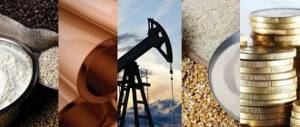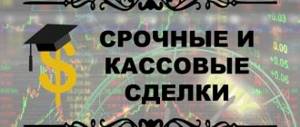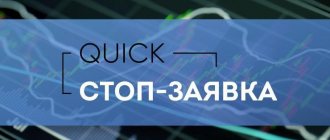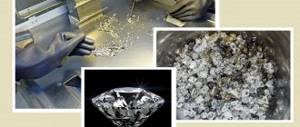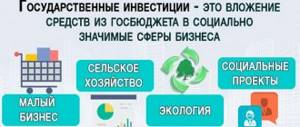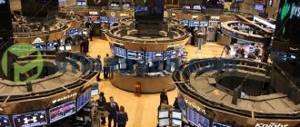olegas May 12, 2021 / 70 Views
Exchange goods are commonly referred to as goods traded on commodity exchanges. Unlike other types of financial instruments, commodities have a clear physical form. Figuratively speaking, this is something that can be seen and “touched with your hands.” So, for example, if such financial instruments as shares or bonds represent only rights (bonds are the right to repay a debt with interest, and shares are a share in a business), then a barrel of oil, as they say, is also a barrel of oil in Africa .
The term commodities is often used in relation to exchange-traded goods. It comes from the English commodity (this is how goods traded on the stock exchange are called in the USA). The English word comes from the French commodité (convenience, comfort), and that, in turn, from the Latin commoditatem (advantage, convenience).
Exchange requirements
It so happens that each exchange independently determines which goods will be included in trade on its platform. The product range changes every year, but only some requirements remain unchanged:
- Mandatory standardization. They trade on exchanges even when the declared goods are not available. Therefore, it is necessary to ensure maximum standardization, that is, all products must have the declared level of quality, be supplied to the exchange in the maximum quantity, and have conditions of storage, transportation and contract execution terms identical to other goods.
- Interchangeability. An exchange product is one that can be replaced by another similar in composition, quality and type, as well as labeling and batch quantity. Simply put, the product can be depersonalized if necessary.
- Mass character. Since there are many buyers and sellers on the exchanges at one time, this makes it possible to sell large quantities of goods and more accurately generate data on supply and demand, which will subsequently affect the establishment of market prices.
- Free pricing. Prices for commodities should be freely set depending on demand, supply and changes in other economic factors.
Perhaps these are the main characteristics of exchange goods formed by trading platforms.
Types of exchanges
Depending on the range of goods sold and purchased on the exchange, they can be divided into universal and specialized.
Universal exchanges - the largest international commodity exchanges (MTB) in terms of the volume of transactions carried out are universal. For example, the Chicago Board of Trade trades in wheat, corn, oats, soybeans, soybean oil, gold, silver, and securities.
On the Chicago Mercantile Exchange - cattle, live hogs, bacon, gold, lumber, securities, foreign currency. At the Tokyo Mercantile Exchange, transactions are made in gold, silver, platinum, rubber, cotton yarn, and wool yarn. In addition, the Sydney and Hong Kong (Hong Kong) exchanges are universal exchanges.
Specialized exchanges have a narrower product specialization.
Mainly by product groups. Such exchanges include, for example, the London Metal Exchange - a group of non-ferrous metals: copper, aluminum, nickel, tin, lead, zinc, silver and, since March 2005, plastics), the New York Coffee, Sugar and Cocoa Exchange, the New York Exchange cotton, etc.
The following cities in relation to goods are also centers of exchange trading:
- cotton - Alexandria, Sao Paulo, Bombay, Sydney;
- rice - Milan, Amsterdam, Rotterdam;
- wool - Antwerp, Melbourne, Sydney, Roubaix (France);
- jute - Kolkata, Karachi;
- coffee - Paris, Rotterdam, Le Havre, Hamburg, Amsterdam.
What kind of product is this?
An exchange commodity is a product that is the object of exchange trading and meets its requirements. In world practice, there are three main classes of exchange positions: foreign currency; securities; tangible goods; stock price indices and interest rates on government bonds.
Goods that have a low degree of capitalization of production or use have a greater chance of remaining objects of exchange trading. On the other hand, it is possible to trade highly monopolized goods on exchanges if there is a segment of open trade and non-monopoly participants in transactions.
At the end of the 19th century, there were about 200 types of goods on the exchanges, but already in the next century their number decreased significantly. In the past, it was believed that the major commodities were ferrous metals, coal and other products that are not traded today. Already in the middle of the twentieth century, the number of exchange-traded products decreased to fifty, and it practically did not change. At the same time, the number of futures markets began to expand. These are platforms that sell goods of a certain quality, so several futures can be created for one product.
Nomenclature
Traditionally, exchange goods are products of two main groups:
- Agricultural and forestry products, as well as products obtained after their processing. This category includes grain crops, oilseeds, livestock products, food products, textiles, forest products, and rubber.
- Industrial raw materials and semi-finished products. This type of exchange commodity includes non-ferrous and precious metals and energy resources.
The number of exchange commodities from the first group has been steadily declining since the 80s of the last century. Although recently there have been upward trends again. It is worth noting that the commodity market is greatly influenced by scientific and technological progress. As a result of the development of science, many substitutes for some products on the stock exchange have appeared. Competition between them helps stabilize prices and reduce exchange turnover. NTP also contributed to the increase in second category goods on the exchange.
Origin of the word "commodity" (etymology)
The word commodity appeared in English in the 15th century, came from the French language (French commodité ) and meant benefit or profit.
This word came to French from Latin (lat. commoditatem ), where it meant “correspondence, adaptation.” The Latin root commod- means "proper", "proper measure, time or condition" and "advantage, benefit".
In many CIS countries, for various reasons, other goods (for example, cars, real estate) are traded on commodity exchanges, which are unusual in the nature of exchanges. Because of this, among stock exchange professionals, borrowings from the English “ commodities ” are increasingly being used to designate the main exchange commodities.
New varieties
The concept of an exchange commodity in the modern world has expanded significantly. Today, such a group of trade objects as financial instruments is often encountered. People trade price indices, bank interest rates, mortgages, currencies and contracts. Such operations first began to be practiced in the 70s of the last century.
The development of futures markets was greatly influenced by the transformation of the world economy in the 70s, when exchange rates between the dollar and the euro began to fluctuate. The first futures contracts were for National Collateral Association mortgage certificates and foreign currencies. It took about five years of hard work to develop such contracts. Futures trading gradually expanded to cover more and more types of financial instruments. In the same 70s of the last century, options trading began for the first time. In 1973, the world's first Chicago Board Options Exchange was opened in the United States of America.
Commodity contracts played a leading role on exchanges until the end of the 70s. Later, the share of financial futures and options contracts began to increase. Fuel products, precious and non-ferrous metals are beginning to occupy a significant place among exchange-traded goods on the commodity exchange. The level of trading in futures for agricultural products has increased.
Chicago Exchange CME Group
The largest commodity exchange in the world is now the Chicago Stock Exchange CME Group (more information about this commodity exchange can be read in the article https://yourstockmarket.ru/informacia/chikagskaja-tovarnaja-birzha/), which was created as a result of the merger of two oldest and progressive commodity exchanges USA in 2007, namely the Chicago Mercantile Exchange (CBOT) and the Chicago Mercantile Exchange (CME). The consolidation of the two exchanges made it possible to expand the range of exchange instruments and increase the liquidity of the American exchange commodity market. Now this exchange provides the opportunity to trade derivatives on grains (wheat, corn, oats), soybeans, cattle, pigs, lumber, precious metals (gold, silver), foreign currency, US treasury notes and bonds, municipal bonds, stock and bond indices and etc.
It is important to note that as a result of the creation of the exchange alliance, the CME Group acquired the status of a profitable organization, with a total shareholder value of $18.69 billion in 2009. The cost per share was $12.44 and yielded $4.6 in dividends.
The main indicators of the development of the exchange were the improvement of trading technology using electronic technologies for the trading and clearing process, which allows processing more than 155 million transactions per day, that is, calculated at 6 milliseconds per transaction. The exchange trading system is quite liquid and safe for exchange trading participants. During 2009, 350 new exchange instruments were developed and introduced, which include futures and options on interest rates, indices, exchange rates, energy resources, agricultural products, metals, real estate, and weather. Thus, a large number of OTC market instruments were introduced into circulation, namely swaps and forwards for various types of assets, including the Forex market, which significantly expanded the range of investors to 85 different countries around the world.
The main technological base is the CME-Globex trading system, which is developed on the basis of high-tech solutions for organizing trade and margin calculations. The main clearing house that services all settlements on exchange transactions and OTC market transactions is the CME Clear-Port system. The exchange maintains close ties with emerging markets. Partnerships in the development of joint trading platforms are observed with the Brazilian exchange BM&FBOVESPA (acquired 5% of shares), the Malaysian Derivatives Exchange (acquired 25% of shares) and the Korean Exchange. In addition, an important direction in the development of the CME Group Chicago Exchange in the domestic market is the completion of consolidation processes, which are aimed at the final formation of an alliance with the American exchanges NYMEX and COMEX.
First product and deals
As soon as exchanges began to emerge, the first place on the list of exchange commodities was ordinary pepper. It, like the bulk of other spices, was fairly homogeneous, so based on one small sample it was possible to form an opinion about the entire batch as a whole.
Today, about 70 types of exchange commodities are sold and bought. Exchange transactions are classified according to different criteria. On exchanges, people can buy both real-life goods and contracts that provide the right to own something. According to this criterion, two main types of transactions are determined:
- Transactions with real goods.
- Transactions without goods.
It was transactions with real goods that laid the foundation for the creation of exchanges. Today, the main commodities of global exchange trading are: securities, currencies, metals, oil, gas and agricultural goods.
Main types of exchange commodities
Energy raw materials:
- Oil
- Coal
- Natural gas
- and etc.
Products of the agro-industrial and agricultural sector:
- animals
- meat
- corn
- beans
- soybeans
- potato
- milk
- sugar
- coffee
- orange juice concentrate
- and etc.
Raw materials for textile production:
- Cotton
- Linen
- Wool
- and etc.
Raw materials for industrial production:
- Forest
- Treated lumber
- Rubber
- Ore
- and etc.
Metals:
- Steel
- Scrap ferrous metals
- Non-ferrous metals
- Precious metals
- and etc.
Securities
Securities are a special product that can only be purchased on the securities market. This is a document of a certain form that certifies property rights. In a broader sense, a security can be any document that can be bought or sold at an appropriate price. For example, in the Middle Ages they sold indulgences, and as for our time, “MMM tickets” would be an excellent example. Today it is almost impossible to give an exact definition of the concept of “security”, therefore legislative acts simply fix its significant functions:
- Distributes monetary capital among economic segments, countries, territories, companies, groups of people, etc.
- Gives the owner additional rights, for example, he can participate in the management of the company, own important information, etc.
- Securities guarantee a return on capital or a return on capital itself.
Securities provide an opportunity to receive money in different ways: it can be sold, used as collateral, donated, inherited, etc. As a commodity, securities can be divided into two large classes:
- Basic securities or primary securities. This category usually includes stocks, bonds, bills, mortgages and depositary receipts.
- Derivatives – futures contracts, freely traded options.
Basic securities can be freely bought and sold on and off exchanges. But in some cases, financial transactions with securities may be limited, and they can only be sold to those who issued them, and then after the expiration of the agreed period. Such securities cannot be exchange goods. Only those securities that are issued in sufficient volume to meet the needs of supply and demand can deserve this status.
Currency
Since each country has its own currency, and no one has come up with a single means of payment, when purchasing foreign goods, you have to deal with the procedure of converting one currency into another. Typically, currency refers to all foreign money and securities, means of payment and precious metals expressed in their equivalent.
Experts have long considered currency as a commodity that can be bought and sold. To carry out a purchase and sale transaction, you need to know what the current exchange rate is and how it may change. The exchange rate is the price at which foreign money can be bought or sold. The exchange rate can be set by the state, or it can be determined by supply and demand on the open exchange market.
When determining the exchange rate, it is worth taking into account the direct and inverse exchange quotation of the product, which is given with an accuracy of four digits after the decimal point. Most often, there is a direct quotation, which means that a certain amount of currency (usually 100 units) is the basis for indicating the unstable value of the amount of the national currency. For example, the exchange rate of franc 72.6510 for guilders would mean that for 100 guilders you can get 72.6510 francs.
Rarely, but it still happens, exchanges use reverse quotation based on a fixed amount of the national currency. Until 1971, it was used in England, since there was no decimal system in the monetary sphere, a reverse quotation was easier to use than a direct one.
Trading currency on exchanges is possible only if there is no government restriction on its free sale and acquisition.
Organization of a commodity exchange
Most exchanges are a voluntary association of individuals and legal entities registered in the country where the exchange is located, which does not aim to make a profit. The organizational and legal status, as a rule, is a closed joint stock company. In Russia, according to the legislation, exchanges can have the status of a non-profit partnership or joint stock company
On the Chicago Board of Trade, GIM members can trade all futures contracts listed in the government's securities futures market directory.
Preferred members of this exchange with IDEM status enjoy trading advantages on all index, debt and precious metals futures contracts. Members of the same exchange with COM status have the right to trade under contracts presented in the list of commodity options on the exchange.
The supreme governing body of the exchange (after the general meeting of the founding members) is a special elected body (board of directors, board of governors, exchange committee), to which other committees, executive management, hired personnel, etc. are subordinate.
Commodity market
If everything is clear with securities and currencies, then the commodity market is a more complex structure. This is a complex socio-economic category, which is manifested in various aspects of interactions. We can say that this is the sphere of commodity exchange in which relations of purchase and sale of goods are realized, and certain economic activities take place that sell products.
Main elements of the commodity market:
- Supply is the entire quantity of goods produced.
- Demand is the need for manufactured products by the solvent population.
- Price is the monetary expression of the value of a product.
The product market can also be divided into the market for finished products, services, raw materials and semi-finished products. These segments, in turn, are divided into markets for separately produced products, among which are exchange markets.
Market criteria
Another important indicator is interchangeability. That is, corn from one supplier is not much different from corn from another supplier. Accordingly, competition in the market is approaching ideal.
The basis for pricing here is the level of demand and the supply that covers it. The price of a product increases if demand increases and supply does not correspond to it, and vice versa. The price will fall if supply exceeds demand. Thus, price formation remains the most natural. In this regard, few can compete with the commodity market. Accordingly, there are a lot of opportunities here for a novice trader. Since studying the market environment is not difficult.
This explains the fall in global oil prices following the US announcement that shale oil production and supply would not be reduced. The market has adopted a position in which supply is overstated. Thus, many states whose economic basis lies in the oil business began to lose ground in their national currency. Obvious examples are Russia and Kazakhstan.
Non-ferrous and precious metals
All metals are divided into industrial and precious. Precious metals include gold, which is most often used for transactions in order to accumulate funds. As a result of high inflation in the securities and currency markets, people are turning to the precious metals market in droves to protect their assets. Since the extraction of precious metals is limited, their value remains stable despite possible economic fluctuations.
Industrial commodity metals are copper, aluminum, zinc, lead, tin and nickel. They are usually bought to be recycled later, so their value is tied to changes in supply and demand.
However, there are metals that have a dual nature. For example, silver. In certain eras it was perceived as a precious metal, and later as an industrial metal. All this depends on economic conditions. In any case, industrial and precious metals are classic examples of commodities.
Intercontinental Exchange ICE Futures Europe
The intercontinental exchange ICE Futures Europe was first organized back in 2001. in the form of a reorganization of the over-the-counter energy market in Europe and the International Petroleum Exchange (IPE). There are now three organizational forms of ICE, namely the Intercontinental Futures Exchange of Europe ICE Futures Europe, the over-the-counter ICE platform - ICE-OTS and the American-European holding ICE Futures US The intercontinental exchange ICE Futures Europe today accounts for up to 50% of world trade in petroleum products.In 2005, the exchange's securities began to be listed on the New York Stock Exchange.In 2007, the ICE Futures Europe exchange absorbed the New York Mercantile Exchange New York Board of Trade (NYBOT), which contributed to the emergence of ICE Futures US; as a result, on the ICE Futures US exchange platforms, exchange transactions are traded both for energy resources and their indices, and for the commodity group: coffee, cocoa, sugar, cotton, and commodity indices, exchange rates , currency indices and the like.
It turns out that the main trends in the development of the world exchange market are closely related to the processes of globalization and concentration of world investment capital. This, in turn, deepens competition on the global exchange arena and, as a result, led to the emergence of exchange alliances at the national and intercontinental levels.
Thus, in the conditions of continuous integration of the world economic space, the fierce competition of world exchanges contributes to the introduction of new tools and the search for alternative and innovative ways to attract investment capital. At the same time, the financial crisis contributed to a decrease in liquidity on the leading stock exchanges of the USA and Europe and a movement to new investment-attractive markets of the “BRICs” countries, which included the exchanges of Brazil, Russia, India and China, which in recent years have displaced a significant part of the stock exchanges of the USA and Europe in the list of the 10 most powerful exchanges in the world in terms of transaction volumes.
As a result, US and European exchanges continue consolidation processes based on the development of new electronic trading platforms and the attraction of over-the-counter market instruments to them, which significantly expands the circle of potential speculators and investors. However, according to most experts, even such steps will not reduce the potential of the exchanges of the BRICs countries on the global exchange market in the near future.
Oil market
Until the 60s of the last century, the world market for oil and petroleum products was something illusory and unstable, since a high level of monopolization would lead to serious changes in market relations. But even at that time, the practice of concluding short-term (one-time) transactions with sellers or buyers who had nothing to do with the monopoly market had already begun to appear.
In the 70s, private oil refining companies began to build their own plants. Their products found demand and were sold even on a long-term basis, although most often such companies entered into short-term (one-time) deals. Since there were more short-term transactions, companies purchased raw materials in a similar way.
In the 1980s, the oil market became unstable and the importance of long-term contracts decreased significantly. A market for one-time transactions quickly began to form, which fully covered the needs of consumers. Of course, this also increased the risk of financial losses due to price fluctuations. Therefore, for a long time, experts have been looking for means that will help avoid possible losses. Exchanges became one of these means.
Gasoline and gas
In 1981, the New York Mercantile Exchange established a contract for the purchase and sale of leaded gasoline, which proved to be very successful. Three years later, it was replaced by a contract for the purchase and supply of unleaded gasoline, which immediately attracted the attention of oil market traders. In the mid-90s, not entirely favorable sales conditions arose for this commodity due to the introduction of new laws that protected the environment. But already at the end of 1996, all the problems were solved, and trading in this market continued with the same success.
In the last years of the 20th century, natural gas futures contracts were introduced. However, the first attempts were not as successful as expected. This was due to unformed centers of mass sales and product delivery systems. Although now contracts for natural gas look very attractive.
Trading commodities on the derivatives market
Most of the transactions with exchange commodities take place on the so-called derivatives market (not from the word urgent, but from the word - term). Such contracts are usually called derivatives or derivative financial instruments. These include options and futures contracts.
This type of commodity trading is not accidental and also has its own historical background. Take futures contracts, for example, their essence is that a deal concluded today entails the delivery of the corresponding product not immediately upon conclusion, but after a predetermined period in the future. In this case, both parties to the futures contract undertake specific obligations, guaranteeing delivery and payment within a predetermined time frame.
Option contracts also involve the delivery of goods at a certain time in the future, but their parties do not undertake any obligations, but are only given the right. In other words, if the execution of a futures contract is mandatory, then the terms of the option contract can be waived (this, by the way, is their key feature).
Let's look at a simple example of concluding a contract on the derivatives market. Let's assume that there is a confectioner who bakes various delicacies from dough mixed with wheat flour, and there is a farmer who grows the very wheat from which this flour is ground.
Now imagine that the confectioner decided to take out a loan to expand his business and, after doing the calculations, came to the conclusion that he would be able to afford it, but on the condition that grain prices do not rise in a year. What does he do next? He enters into a futures contract for the delivery of wheat in one year at the current price and at the same time calmly takes out the necessary loan.
In a year, the price of wheat may remain at the same level, in which case the confectioner and the farmer will remain “within their own hands.” Or maybe the price will change (which is more likely), in which case two options are possible:
- The price of wheat will rise. In this case, the confectioner will receive wheat at a low price, and the farmer will have to supply it to him (despite the fact that at current prices he could sell it for much more);
- The price of wheat will decrease. In this case, the confectioner will receive wheat at a higher price (than what is on the market) and he will have to put up with this. At the same time, the farmer will benefit because this batch of goods (the size specified in the futures contract) will be sold at a price higher than the market price.
What if, instead of a futures contract, an options contract was concluded? In this case, neither the farmer nor the confectioner would have any obligations. Both could refuse to fulfill it: the farmer could not supply wheat at a low price (if prices for it rise), and the confectioner could buy it cheaper (if prices for wheat fall).
Indexes
And the last thing worth mentioning when characterizing a commodity is stock indices. They were invented to give traders the ability to get relevant information about what was happening in the market. Initially, indices performed only an information function, showing market trends and the speed of their development.
But gradually accumulating data on the state of stock indices, economists and financiers were able to make forecasts. After all, you can always find a similar situation in the past and see what the index movement was. The likelihood of this happening again was high.
Over time, the use of the index has become multifunctional. They even began to use it as an object of trade, offering it as a base commodity for the development of a futures contract. Indices can be sectoral, global, regional and free; they are used in any of the markets. Although they originated in the stock market, where they are still most widespread.
Indices are usually named after the person who came up with a certain methodology or the news agencies that calculate them. The most famous and oldest world index is the Dow Jones Industrial Average. Charles Dow, the owner, in 1884 tried to understand how the stock price of the eleven largest companies had changed. Although he managed to calculate not so much an index as an average cost, even today this method is used in economics.
Exchange trading objects
Exchange in Russia Read more: Transactions made on the commodity exchange
3. Objects of exchange trading.
Currently, approximately 70 species are objects of exchange trade.
products, which account for about 30% of international trade turnover.
The turnover of international commodity exchanges for all types of transactions is estimated at 3.5-4.0
trillion; annually (this is only for international exchanges).
Agricultural and forestry products account for two thirds of goods
traded on the stock exchange. In the first place are oil seeds and their products
processing - flaxseed and cottonseed, soybeans, soybean oil. On the second
place - wheat, corn, oats, rye, barley, rice. Third place is taken by -
live cattle and meat.
In the group of industrial raw materials and products of their processing, more than half
accounts for fuel products: crude oil, diesel fuel, fuel oil, gasoline,
propane gas The other half consists of non-ferrous and precious metals: copper,
lead, tin, zinc, gold, silver, platinum, palladium.
In addition to commodities, exchange trading extends to some other sectors
market - the capital market (stock exchange) and the foreign exchange market (currency exchange).
The subject of my essay will be only the commodity exchange. Let us now consider the functions
commodity exchange in modern economic conditions.
4. Functions of a commodity exchange.
The exchange is an organizing, system-forming part of the market structure. Tasks
exchanges are not a supply of raw materials, capital, currency to the economy, but an organization
streamlining and unification of markets for raw materials, capital and currency. Exchange functions:
1. Organization of the raw materials market using the exchange mechanism:
- first of all, the exchange provides demand for raw materials, which is not directly related to
its use. Specifically, exchange supply and demand are carried out
stock exchange figures are stock speculators. Exchange trading provides
the possibility that at existing prices there will be neither shortages nor
overstocking;
- it is not the product itself that is traded on the exchange, but the title of ownership of it, or
contract for the supply of goods. A modern commodity exchange is a market
contracts for the supply of goods with relatively small sizes
real supplies. The exchange, without connecting the movement of large masses of goods,
equalizes supply and demand;
2. From here we can see another component of market organization - price stabilization:
- price fluctuations caused by the discrepancy between real demand and real
supply, weakly elastic, are not extinguished immediately, but rather have
cumulative - the ability to turn into sharp price fluctuations.
Stock speculation is not a mechanism for inflating prices, but for
stabilization;
- an important factor in stabilizing prices is the transparency of the transaction,
public setting of prices at the beginning and end of the exchange day (exchange
quotation), limiting daily price fluctuations to limits established
exchange rules. The information activities of exchanges are related to this.
3. Development of product standards, establishment of varieties acceptable for
consumers and therefore have relative liquidity, registration
brands of companies admitted to exchange trading. The latter is especially important. This
a kind of qualification for the quality of products produced by the company. Important side
activity of the exchange is the standardization of standard contracts, a kind of
establishing trade traditions.
4. Exchanges continue to perform their commodity distribution function, i.e. that function
because of which they originally arose - the purchase and sale of real
goods.
5. By stabilizing prices for a limited list of raw materials and goods, exchanges stabilize
and the costs of producing other, not just commodity goods.
6. Stabilization of money circulation and credit facilitation.
The exchange increases the capacity of money circulation, because it represents
the sphere of maximum liquidity of goods. The stock exchange is one of the most important areas
applications of loan capital, since it provides reliable
securing loans and minimizing risk.
7. Settlement of all kinds of disputes and disagreements between the parties -
arbitration activities.
8. Formation and functioning of the world market. Modern commodity exchange in
This moment connects the functioning of commodity, stock and currency exchanges.
So, a commodity exchange is a market mechanism that performs a number of stabilizing
functions in the economy, namely provides:
— liquidity and optimal distribution of the most important raw materials
goods;
— stabilization of prices and costs, exchange rates, money circulation and credit.
Now, from the general functions of the exchange, let’s move directly to what
happens on the stock exchange, what types of transactions are concluded there.
Exchange in Russia Read more: Transactions made on the commodity exchange
Information about the work “Exchange trading”
Section: Stock Exchange Number of characters with spaces: 41192 Number of tables: 0 Number of images: 0
Similar works
Commodity exchange and stock trading
49692
0
0
... activities of commodity exchanges The exchange has the right to enter into cooperation agreements on its own behalf with foreign legal entities and individuals within the limits of the rights granted to it by the Law “On Commodity Exchanges and Exchange Trading” and other acts of legislation, including entering into agreements on the import of goods intended for carrying out the activities of the exchange without the right to exhibit these...
Basics of stock trading, commodity exchange
38505
1
0
... only a connection is established between the manufacturer and the consumer, between the wholesale intermediary and the manufacturer or consumer. In relation to our conditions, the main functions of a commodity exchange, in addition to providing a trading place, organizing exchange trading and establishing rules, should include such functions as developing standards for products sold through the exchange, as well as a package of standard...
Exchange trading rules
64649
0
0
... the obligations of an option contract may be imposed solely on the issuer of the option. The option can be sold without restrictions to other persons during its validity period. CHAPTER 2 RULES OF EXCHANGE TRADING The Ukrainian Universal Commodity Exchange /hereinafter referred to as UTC/ serves to create the necessary conditions for participants in exchange trading in their conduct within the framework of current legislation and...
Exchange trading in Russia and the world
40769
0
0
...a form of commercial intermediation. All civilized peoples follow this path. There is no doubt that, having overcome all the difficulties and obstacles, Russia will not only practically implement this form of commercial relations, but will also join the world exchange trading system. 2. MAIN TYPES OF COMMODITY EXCHANGES. A commodity exchange is an organization operating on a self-sufficiency basis to: provide...
